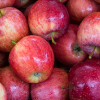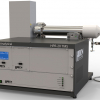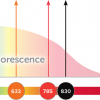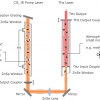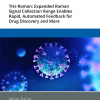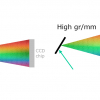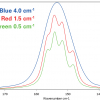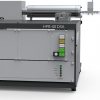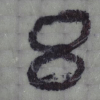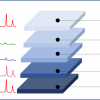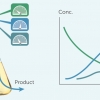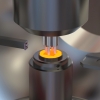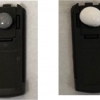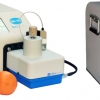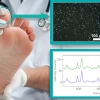Spectroscopy Applications
Pages
BioChromato show how their ionRocket sample preparation device, used in combination with DART®-MS, enables routine analysis of low solubility, high molecular weight compounds.
For rapid qualitative analysis of liquid samples, a liquid film can be formed by simply squeezing the sample between two windows without the need for a spacer.
This application describes breath by breath analysis of expired isoprene during exercise.
UV Raman allows fluorescence background to be eliminated entirely. This is explored in this application note.
This note provides an introduction to the applications and technology of THz molecular lasers.
This note describes the considerations in grating selection and how the user may prioritise them.
A convenient, non-destructive way to determine the composition of syngas is to use mass spectrometry, which can identify the gases and measure the compositions in real-time.
In this application note the effect of PPO concentration on the luminescence decay profile of the LAB/PPO system is investigated using time-resolved X-ray excited luminescence spectroscopy.
This paper discusses how and why the spectral resolution required for dispersive Raman microscopy depends on the intended application and the sample material.
This application report outlines practical approaches for NMR electrolyte analysis and how the measured parameters can affect performance using examples from lithium battery R&D.
MIMS application in determination of N2 and Ar levels in marine biological denitrification processes
The deviation of the N2, Ar concentrations from equilibrium are known to be indicative of the important biological and physical processes taking place in the marine and aquatic biological environments and can be measured by membrane inlet mass spectrometry (MIMS).
The landscape of controlled substance analysis is changing with compact mass spectrometers. With the growing risk of exposure to fentanyl and its analogues, there is a need in law enforcement and decontamination services for analysis that is fast, dependable and can be operated with little to no training.
This application note describes how Raman and photoluminescence microscopy can be used as an analysis tool in any forensic laboratory.
In this application note, the use of Raman to monitor the fermentation of glucose (a common feedstock) with yeast is explored.
The detection of hydrogen isotopes and helium in metals has a wide range of applications from hydrogen embrittlement studies to tritium retention in fusion reactor wall tiles.
Disposable ATR slides have particular benefits when analysing packaging adhesives.
This application note shows an example of peptide sequencing in a standard mixture, diluted and directly infused into the API inlet.
Raman spectroscopy is emerging as a tool to accurately diagnose gout and pseudogout for arthritis sufferers.


